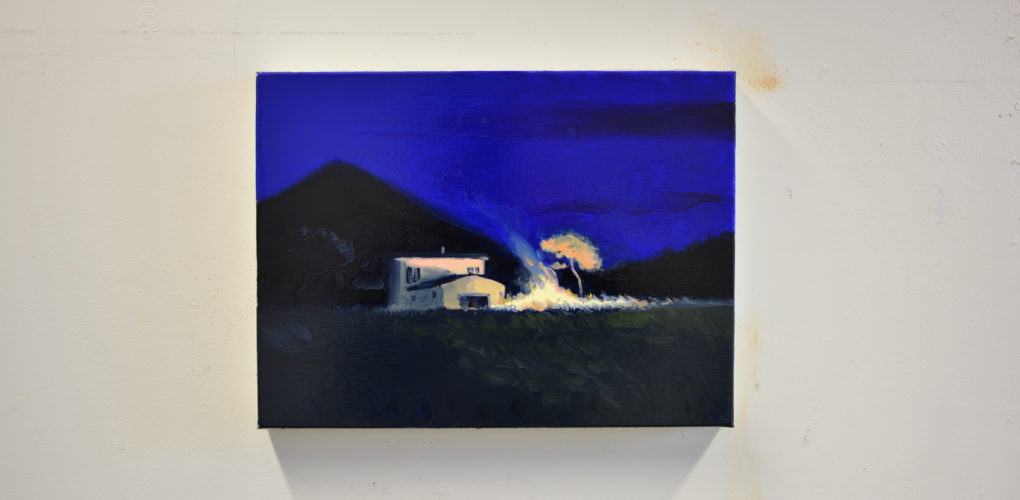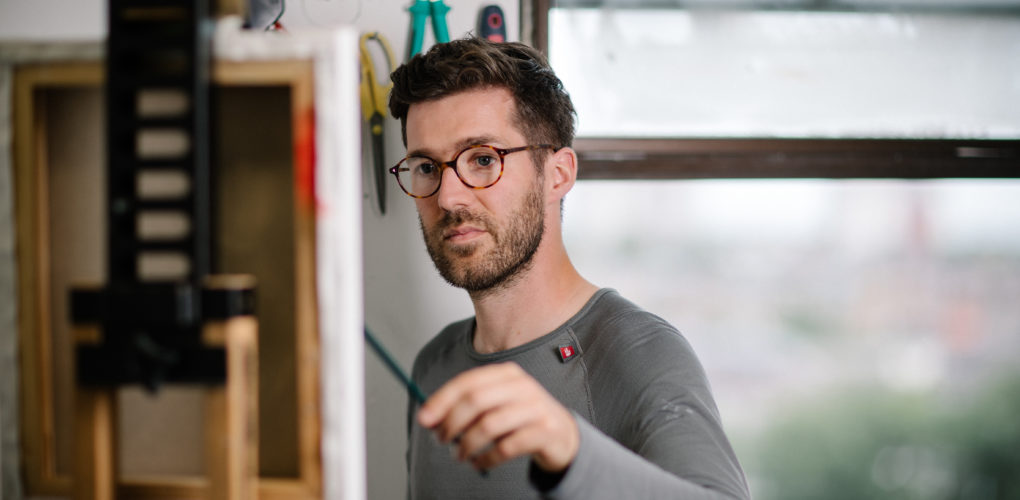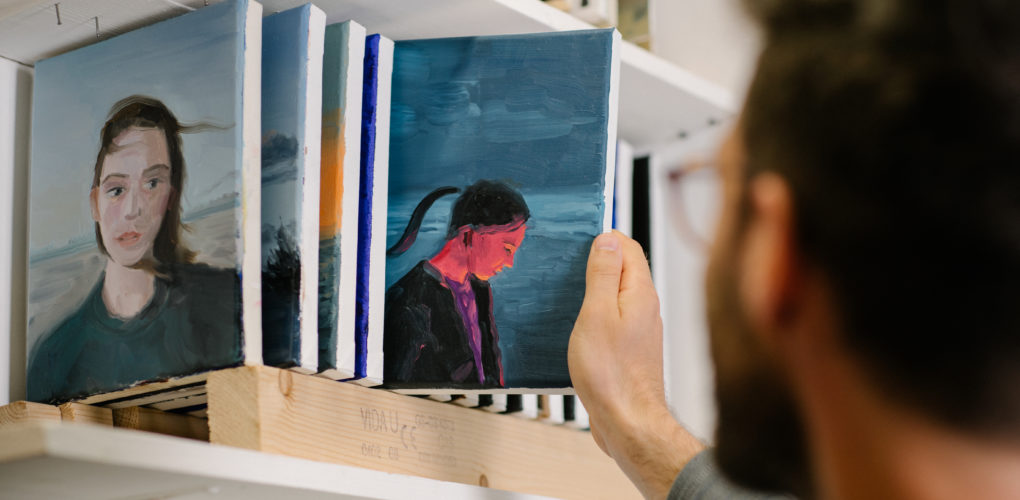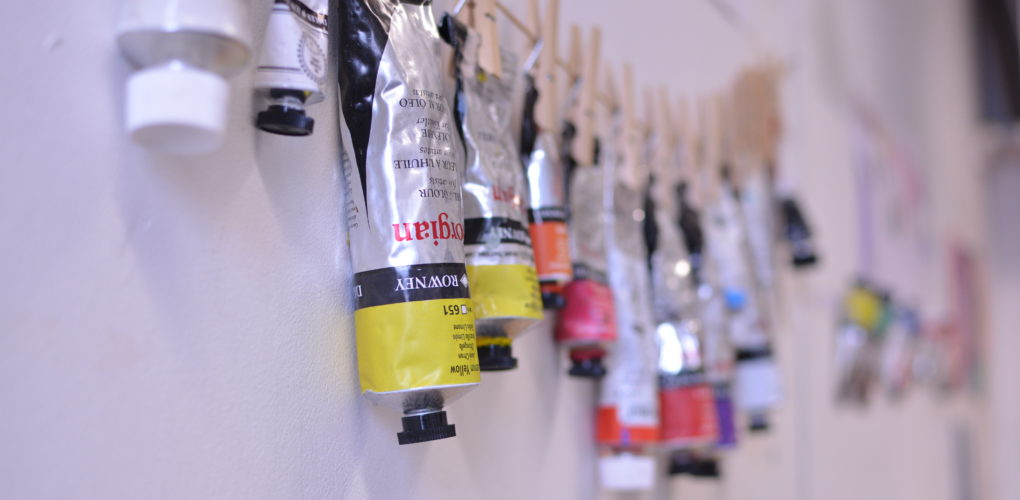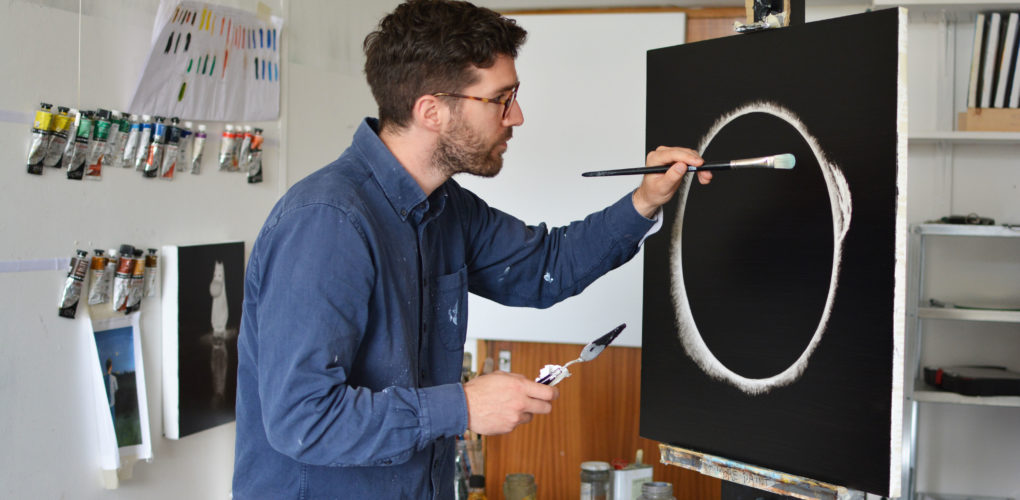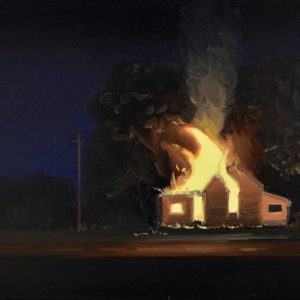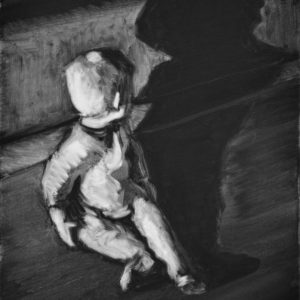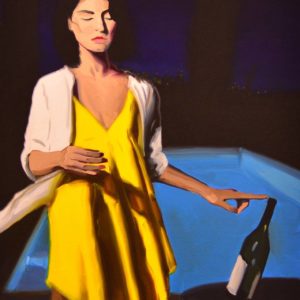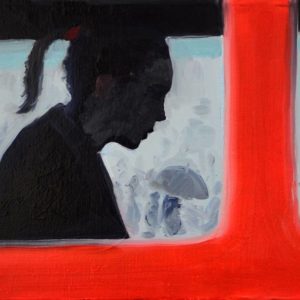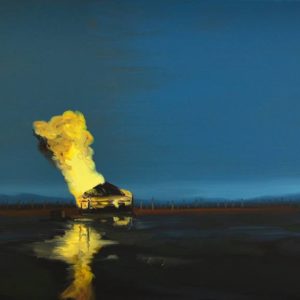One to Watch
 Embracing Change with Owen Normand
Embracing Change with Owen Normand
Scottish painter Owen Normand draws inspiration from the Japanese concept of mono no aware, or the awareness of life’s impermanence, a state of being in which one finds themselves both wistful and appreciative for the transience of all things.
In his latest series, One In, One Out, houses set in quiet rural landscapes are enveloped in flames, while the sky is suspended at dusk between deep shades of blue and encroaching darkness. The houses are at once calming, unsettling and sublime. For Owen, these houses represent the courage to let go of the past and limited ways of thinking in order to grow—a stage of life often met with all of the flurries of emotions visually encapsulated by Owen’s burning houses. Most of Owen’s works are set at dusk, a fleeting time of day that he finds spurs self-reflection. Indeed, we find ourselves still before Owen’s paintings, mono no aware, as we contemplate what has passed, and what comes next in the narratives depicted. As 2020 comes to a close and we greet a new year, meet Owen Normand, and take respite in his contemplative works.
Tell us about who you are and what you do. What’s your background?
I am a Scottish figurative painter with an interest in making pictures that suggest mood and narrative. I started painting as a child and I have been selling paintings since I was 15 years old. I studied at Edinburgh College of Art and won the BP Portrait Young Artist Award in 2013. I lived in Berlin for seven years and was involved in the art scene there before moving back to Scotland to start a family in 2017. I now live in Edinburgh with my wife and our 2-year-old son. I tutor at a local art school one day a week and paint in my studio four days a week.
What does your work aim to say?
I have one main theme in my work: impermanence. This theme is the golden thread that binds my artistic practice together and is central to the mood of my work. I don’t like to tie myself down to one way of working, so I make series of paintings that vary in style or subject matter but always address ideas around this central theme.
In Holding Out, [for example] I was interested in creating a scene that expressed some of the anxieties and bitter-sweet feelings that come with accepting a chapter of your life is over and a new one is beginning.
Can you walk us through your process for creating a work from beginning to end?
The first part of my creative process happens in my subconscious: ideas, moods and images come to me and bounce around in my head. I sometimes work from life, do my own photo shoots to get reference images, work from found images, or straight from my imagination – I am wary of settling too firmly into one method of working.
I start a painting by making thumbnail drawings in my sketchbook and taking notes. Once I have developed an idea into a clear composition, I do an underpainting in burnt umber on canvas or board to establish the overall dynamic of the painting. Then I do separate colour studies to test the mood with different colour combinations. Once the underpainting has dried overnight, I begin working over the top in colour and I aim to finish the painting in a single sitting to keep my brushwork exciting and fresh.
What series or artistic project are you working on next?
I am currently working on a series of paintings of burning houses. The series is rooted in my habitual theme of impermanence but this time it’s also a reflection on shelter, roots, and the fragility and uncertainty of life.
Who are your biggest influences and why?
My favourite painters are currently Grace Weaver, Salman Toor, Vivian Greven, Lenz Geerk, Corey Lamb and Charlie Goering. These emerging artists represent an exciting new movement in the contemporary art world. They have pushed for figuration, strong style and narrative to be accepted back into serious art circles, showing that they can be used to express contemporary life.
Love reading about all things art? You can have articles from Canvas, curated collections, and stories about emerging artists delivered straight to your inbox. Sign up for the Saatchi Art Newsletter.
